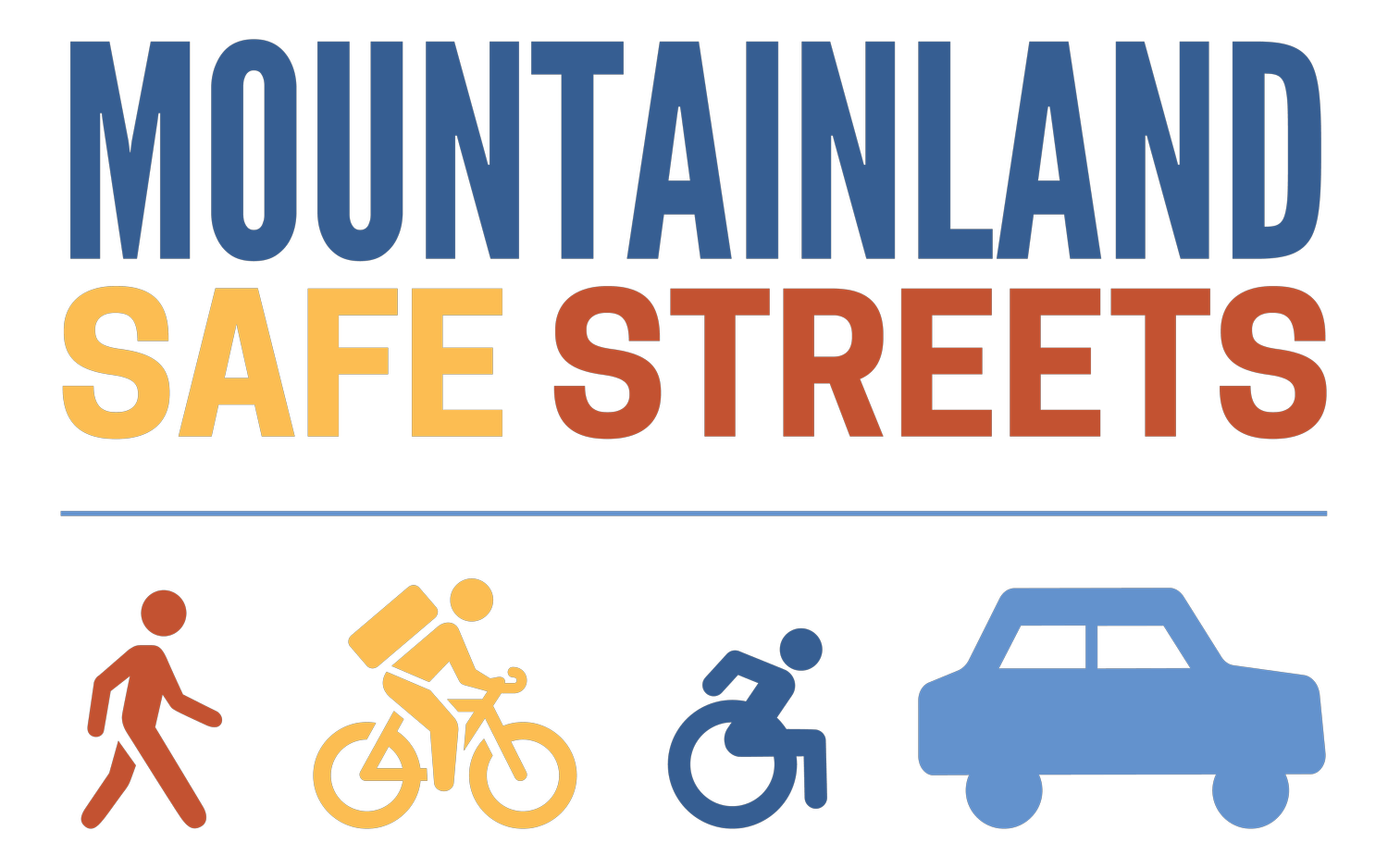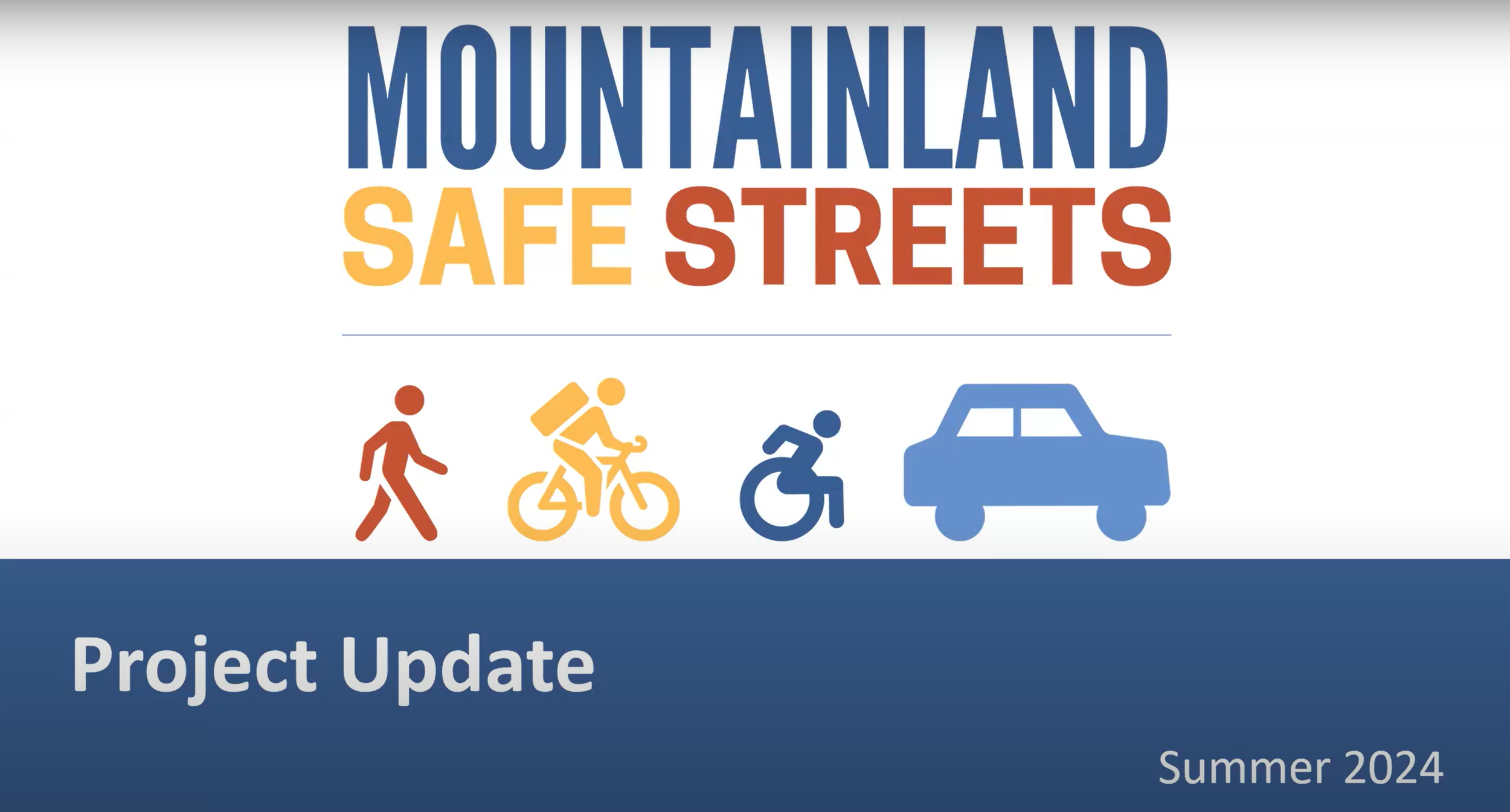
Safe Streets for All
Focusing on road safety in Utah, Wasatch, and Summit Counties
The MAG Metropolitan Planning Organization (MPO) encompasses the rapidly growing Provo/Orem Urbanized Area and all 25 Utah County municipalities and contiguous unincorporated areas. Check out this Safety Action Plan for areas covered by the MPO.
MAG operates the Rural Planning Organization (RPO) for the Wasatch Back areas, including Summit and Wasatch Counties. Review this Safety Action Plan for areas covered by the RPO.
The Mountainland Safe Streets Countermeaures Toolkit presents design treatments known to reduce crashes. Check out the Toolkit for applicable locations for treatment, crash types addressed, and estimated costs for implementation.
In summer 2023, MAG began studying serious and fatal crashes in Summit, Utah, and Wasatch Counties to identify why these crashes were happening and what could be done to reduce them.
Through the course of this project, the Mountainland Association of Governments (MAG) developed a high-injury network and hot-spot maps identifying where these crashes occurred most frequently. We also looked to see where education and enforcement could be used to improve driver behavior. In addition to the data analysis, we went to the community to share what we learned and receive input on what people encounter while traveling and what strategies they would recommend to improve safety. Their insight was combined with the data and illuminated the need for strategies focused on speed management, traffic calming, adding or improving pedestrian and bike facilities, changing traffic signal timing, improving lighting, and adding center medians. View the “MAG Proposed Projects map” below to see the results.
The local Metropolitan Planning Organization (MPO) that guides transportation planning in Utah County adopted the MPO Safety Action Plan by its board on August 1, 2024. The Rural Planning Organization (RPO) that guides transportation development in Summitt and Wasatch counties adopted the RPO Safety Action Plan on November 5, 2024.
Over the next two years, MAG will work with the cities and counties it serves to develop safety improvement projects and prepare grant applications to get them funded and built. For questions about programming please contact either Calvin Clark (Utah County) or Bob Allen (Summit and Wasatch Counties).
Safer Streets Dashboard
The Vision Zero Data Dashboard is an interactive tool that displays some of the key trends for crashes their locations within Utah, Wasatch, and Summit counties. Using data to transparently track and communicate the region’s efforts and the outcomes of these efforts is central to achieving the Safety Action Plan goal.
Click the Dashboard above to view on a new tab
MAG Proposed Project Map
By selecting the blue down arrow above next to “Local Projects” you can then select either “Recommended Point Projects” and “Recommended Linear Projects” and view them on the map. You can zoom in on the map either with your mouse or by selecting the (+/-) icons to view any area with greater detail. All elements on the map are selectable and will provide you with additional information.
OVERVIEW
Throughout the United States and Utah, traffic fatalities have been trending up over the last decade, including pedestrian and bicycle crash fatalities.
To improve safety for all roadways users (drivers, pedestrians, cyclists, people who use scooters, mobility devices, etc.), the Mountainland Association of Governments (MAG), which develops transportation policies and guidance for Summit, Utah, and Wasatch counties, is developed a Safety Action Plan that will have a lasting change on safety culture in these communities.
A Safety Action Plan is the foundation of the US Department of Transportation Safe Streets and Roads for All (SS4A) grant program and is comprised of multiple components, including an official public commitment, a data-driven safety analysis, public engagement and collaboration, equity considerations, policy/process changes, and strategy and project selection. A Safety Action Plan is required to apply for funding through an SS4A Implementation Grant for a specific project.
Ultimately, the plan will result in a series of transportation improvement transportation projects that MAG, and/or cities within its jurisdiction, can submit to the United States Department of Transportation to gain funding for implementation.
FAQs
-
Safe Streets for All (SS4A) is the U.S. Department of Transportation’s (USDOT) comprehensive approach to significantly reducing serious injuries and deaths. The approach requires partnering with community stakeholders to commit to a local goal of moving closer to zero roadway fatalities and serious injuries. Central to the effort is the development of a Safety Action Plan to identify priority actions and changes to target the most significant and urgent problems.
-
The Mountainland Association of Governments (MAG) has received a federal SS4A grant to develop a Safety Action Plan for Utah, Wasatch and Summitt Counties that will outline a holistic, well-defined strategy to prevent roadway fatalities and serious injuries in each county.
-
It means that specific locations or street corridors will be outlined which are unsafe and a plan on how to mitigate the hazards will be put into place. This is just one step in the process to improve safety within Utah, Wasatch, and Summit Counties.
-
The data helps agencies move towards zero fatalities and serious injuries. It identifies crash hot spots, emphasis areas (crash types that occur more often compared to other areas), and vulnerable road users (pedestrians, cyclists, and wheelchair users). An analysis of equity will occur to highlight underserved areas in each of our communities and how these populations utilize the transportation network.
-
Strategy and project selection
The project team identified projects and treatments that address localized and systemic safety issues enumerated through data analysis. We utilized FHWA Proven Safety Countermeasures, Highway Safety Manual Crash Modification Factors, and cost/benefit evaluation to select the most effective treatments.
Additional groups were brought in to help refine project selection. We consulted with local government staff for project identification and selection.
Policy and process changes
To enact real change, the Safety Action Plan must position MAG and its local member governments for successful and easy implementation of safer streets. An evaluation of existing frameworks against national best practices and identifying inconsistencies or barriers to implementation will occur. The plan will be heavily influenced by the understanding and information gained through stakeholder and community engagement and data analysis; as such, the findings from those tasks will influence policy, programmatic, and procedural recommendations to eliminate barriers to safer streets.The development of a regional safety countermeasures toolkit will occur. This tool kit will identify impactful countermeasures, connect them to prevailing crash types within the MPO/RPO, and detail design and implementation considerations. The toolkit could be adopted by member governments or used to inform local design standards or guidelines changes.
Plan development and adoption
The project team will develop comprehensive Safety Action Plans meeting SS4A requirements for self-certification for the MAG (MPO in Utah County and RPO – Wasatch Back in Wasatch and Summit Counties). The documents will clearly identify the projects and programs—both short-term and long-term—that can be implemented to establish a safe systems approach and reduce fatal and serious injuries. We will present each Safety Action Plan to the respective MAG MPO Board and Wasatch Back RPO Board for approval.
-
The public engagement portion of this project is complete, and input gathered from the community was used to inform the Safety Action Plan. If you have comments or questions please contact MAG directly at safestreets@mountainland.org or visit their website at www.mountainland.org. This website will be kept up to date during the project's duration.
PUBLIC ENGAGEMENT SURVEY RESULTS
View the interactive dashboard of public responses to the survey from November – December 2023. This data helped the project team understand the public’s lived experiences on the roads in and near the identified high-injury network and hot spot crash locations.
SCHEDULE
The first phase of the Safety Action Plan process is completed, and a list of initial projects was prepared. Cities and counties are beginning to identify funding for projects including possible SS4A grant funds in 2025 and 2026.

SAFE STREETS AND ROADS FOR ALL (SS4A) GRANT PROGRAM
The Safe Streets and Roads for All (SS4A) discretionary program was created under the Bipartisan Infrastructure Law (BIL) with a dedicated budget of $5 billion spanning from 2022 to 2026. This initiative allocates funds to support regional, local, and Tribal projects through grants, aiming to reduce fatalities and severe injuries on roadways. Notably, there is still over $3 billion accessible for upcoming funding rounds. To find out more information click on the button below.
QUESTIONS?
Please contact Mountainland Association of Governments at 801-229-3800 or safestreets@mountainland.org.










